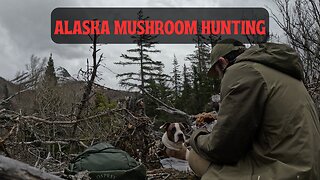Cobweb Mold Introduction
https://www.mycophiliac.com/p/cobweb-mold
Causes of Cobweb Mold
Cobweb mold thrives in warm and humid conditions, making it more prevalent during summer or in areas with high humidity. Poor ventilation and air circulation can also contribute to its growth. Additionally, contaminated equipment or substrate can introduce spores into the growing environment.
Overcrowding and poor hygiene practices can also increase the likelihood of cobweb mold developing. Proper sanitation and hygiene practices and maintaining optimal growing conditions can help prevent the disease from taking hold. Read about Chestnut mushrooms here.
Identifying Cobweb Mold
Identifying cobweb mold correctly is crucial, as it is often mistaken for healthy mycelium. Here are the key differences that can help you accurately identify cobweb mold:
Color and Texture: Unlike the bright white and dense mycelium, cobweb mold is greyish and has a wispy, cobweb-like appearance.
Growth Rate: Cobweb mold propagates at an alarmingly high speed. If you notice an area in your substrate covered in a thin, greyish substance overnight, it's likely to be cobweb mold.
Odor: Healthy mycelium emits a fresh, earthy aroma. In contrast, an unpleasant, musty odor often accompanies cobweb mold.
Cobweb Mold vs. Mushroom Mycelium
Cobweb mold and mushroom mycelium may look similar, but some key differences exist. Mushroom mycelium is a white, stringy growth firmly attached to the substrate or casing layer. It's a normal part of the mushroom growing process and helps to break down the substrate.
In contrast, cobweb mold appears as a fluffy, web-like growth loosely attached to the surface. It can easily be disturbed and spread through the air. It's essential to tell the difference between the two to prevent misdiagnosis and unnecessary treatment.
Learn about penis envy mushrooms here.
Preventing Cobweb Mold
Prevention is better than cure. Here are some measures you can take to prevent cobweb mold:
Maintain Optimum Conditions: Fungi thrive in specific conditions. Maintain a balanced humidity, temperature, and air exchange level to create an environment conducive for your mushrooms, not molds.
Sanitize Regularly: Regular sanitation of your cultivation area and tools is essential. It can significantly reduce the chances of mold spores finding a foothold.
Quality Substrate: Ensure that your substrate is pasteurized or sterilized properly. This process eliminates any unwanted spores present in the substrate.
Read about the Lion’s Mane Mushroom here.
Effective Strategies to Eradicate Cobweb Mold
Even with the best prevention efforts, cobweb mold might still appear. Here's how to combat it:
Manual Removal: Start by removing visible mold using sterilized tools. Remember to dispose of it properly to avoid spreading the spores.
Hydrogen Peroxide Solution: This readily available solution (3% concentration) can be sprayed directly on the mold. It oxidizes the mold without harming your mushrooms.
Improve Ventilation: Increasing fresh air exchange in your growing area helps hinder mold growth while benefiting your mushrooms.
Isolate Infected Areas: To prevent the spread of mold, isolate the infected batch from the rest of your grow area immediately upon detection.
Recovering from a Cobweb Mold Infestation
Once you've handled the immediate mold issue, it's time to focus on recovery:
Monitor Closely: Keep a close eye on your cultivation area for any signs of recurring mold. Early detection can make a significant difference in managing an infestation.
Evaluate Your Procedures: Use this as an opportunity to analyze your cultivation practices. Make necessary changes in your sanitation, air exchange, or humidity control.
Strengthen Your Mycelium: Consider using a casing layer or introducing beneficial bacteria to your substrate. These methods can help boost the resilience of your mycelium against molds.
Cobweb mold is an unwelcome guest in any mushroom cultivation endeavor. However, with a keen eye for identification and effective eradication strategies, you can safeguard your crop against this common fungal foe. With this comprehensive knowledge, you can overcome cobweb mold infestations and continue producing healthy, bountiful mushroom crops.
How can I identify cobweb mold in my mushroom cultivation?
Cobweb mold is identifiable by its small white spots on the casing layer, resembling cottony areas. As it progresses, it envelopes the mushroom mycelium, pinheads, and even small fruit bodies, leading to soft rot. Cobweb mold is darker, often gray, compared to the snow-white mushroom mycelium and grows extremely fast, covering the entire top layer in just 1-2 days.
-
 4:37
4:37
Mycophiliac
2 months ago $0.10 earnedAlaska Sasquatch Mushroom Hunting With the Dog!
87 -
 2:25:28
2:25:28
ThatStarWarsGirl
13 hours agoTSWG LIVE: The Assolyte BREAKS Star Wars | HOTD went Gay |YT Is After My LIVE Channel!
48.6K12 -
 7:32
7:32
JoBlo Originals
20 hours agoChuck Norris V.S Russia - Invasion USA
43.1K14 -
 15:30
15:30
DEADBUGsays
18 hours agoThe Collector, Robert Berdella | Forsaken#4
49.8K4 -
 14:21
14:21
Adam Does Movies
15 hours agoTwisters Is The SAME Movie As Twister! - Spoilers!
50.7K9 -
 1:10:48
1:10:48
TheMonicaCrowleyPodcast
20 hours agoThe Monica Crowley Podcast: A Deep State Drama
50K23 -
 7:27
7:27
The Gun Collective
11 hours agoThe Next-Gen is HERE - TGC News!
37.7K11 -
 16:30
16:30
GameLeap RAID Shadow Legends
8 hours agoHow to Farm EVERY LEGENDARY SKILL TOME (12+ Books Per Month!) Raid Shadow Legends Guide
42.9K3 -
 2:49:34
2:49:34
Price of Reason
18 hours agoTwisters DEFIES Mainstream Media Narrative! Ubisoft APOLOGIZES to Japan for Pushing Propaganda!
55.4K7 -
 1:27:43
1:27:43
Kim Iversen
17 hours agoKamala BEATS Trump In Latest Fake News Poll | Protests Erupt As Netanyahu Arrives In DC With Hostages
127K380